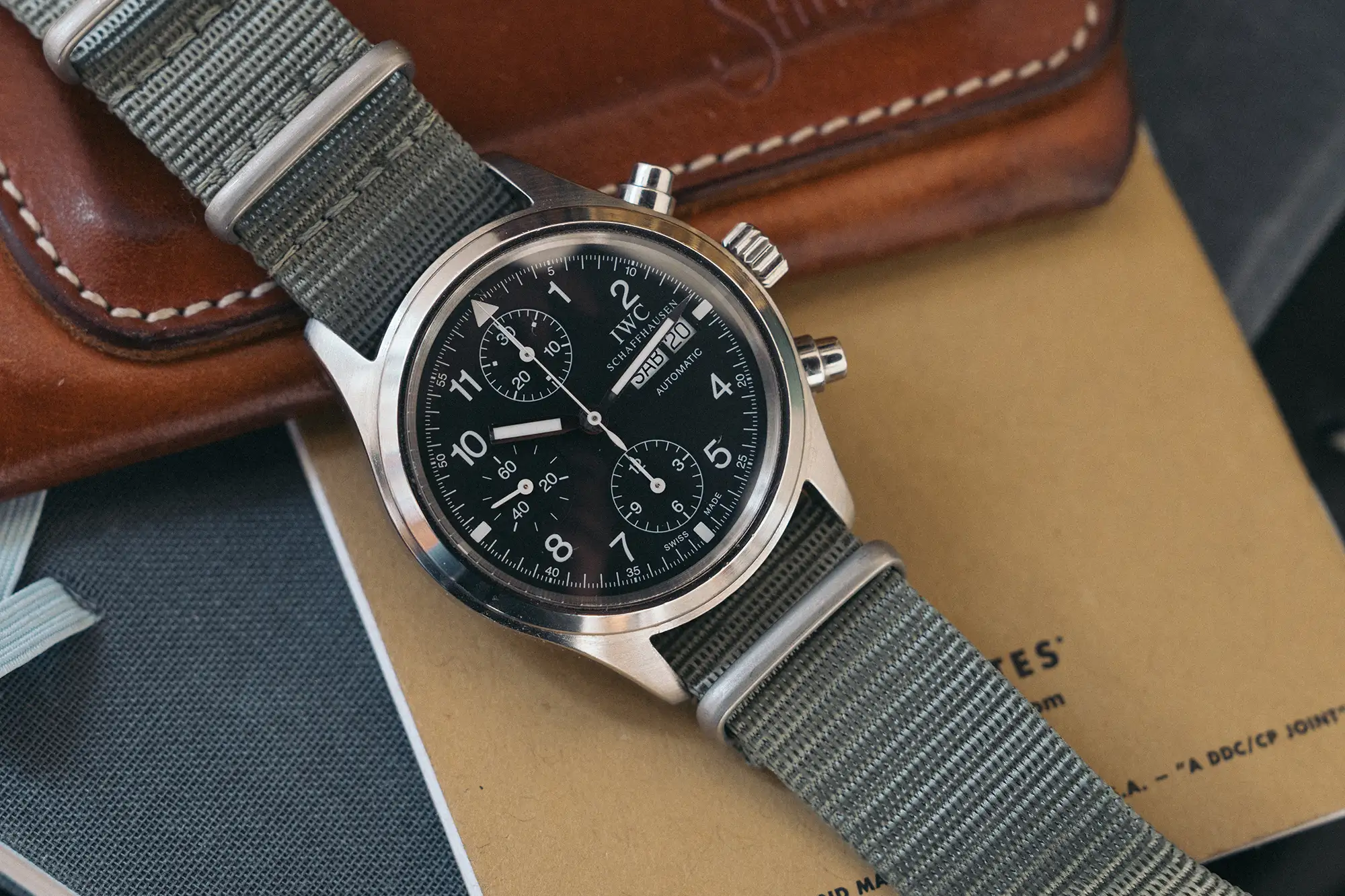IWC is known for their great sport watches, and unique take on practical complications. We know ‘em, we love ‘em. But there’s no denying that, with the brand’s goals of moving further up market, they’ve lost a bit of that raw edge that made them so special just a few decades ago. The precursor to the Pilot Chronograph collection that we have today was the Fliegerchronograph, which boasts great references like the black ceramic 3705, and its steel counter counterpart, the 3706. These watches of the mid-’90s just hit a bit differently than their modern counterparts, and this week we’re taking a look at why.
The 3706 was produced from 1994 to 2005, a period which represented some of IWC’s great tool watches, and this one is no exception. The mid ‘90s were something of a transitional period for the brand, as they wound down their partnership with Porsche Design, and began work on their GST (Gold Steel Titanium) collection (we’ll get to those soon enough), setting the foundation for a contemporary approach to their sport watches. The 3705 showed the brand’s prowess with novel and exotic materials (though it wasn’t the first to do so), and it showed that IWC was ahead of their time in many ways.
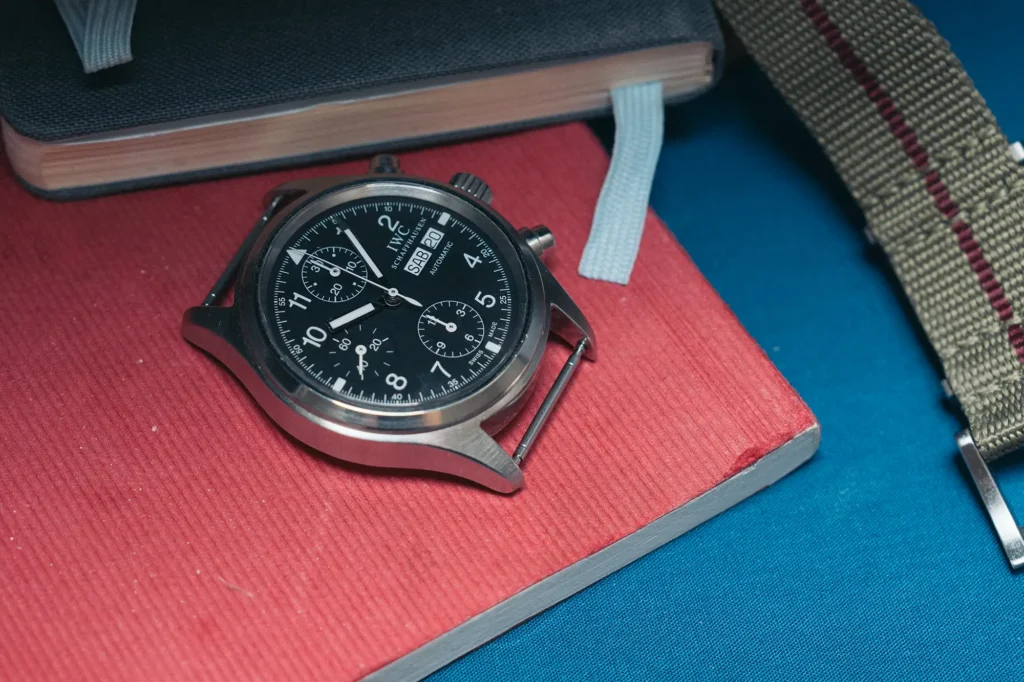
Released alongside the 3705 was the 3706, rendering the same design concept in a steel case of the same proportions. Not many examples of the 3705 were produced, making them somewhat rare and expensive these days, but thankfully the same concept is readily accessible in the 3706 seen here. These watches offered an almost clinically clean take on the pilot watch chronograph, with a focused design that did away with any extraneous details. It’s simple, easily understood, and harbors no flair of any kind. While it was a premium watch even then, there was no pretense to luxury here.
The fully brushed steel case measures 39mm in diameter, and a hair over 47mm from lug to lug making for an all around pleasant experience on the wrist. It does clock in at 14.7mm in thickness, however, but it never seems to hinder the wearability factor. Further, this watch isn’t presented as anything other than a blunt instrument, so the attitude here feels very ‘take it or leave it’. The same goes for the movement, which is a heavily modified Valjoux 7750. More parts have been added to bolster its accuracy and reliability, and the whole thing sits within a faraday cage to protect it from any stray magnetism the wearer might encounter.
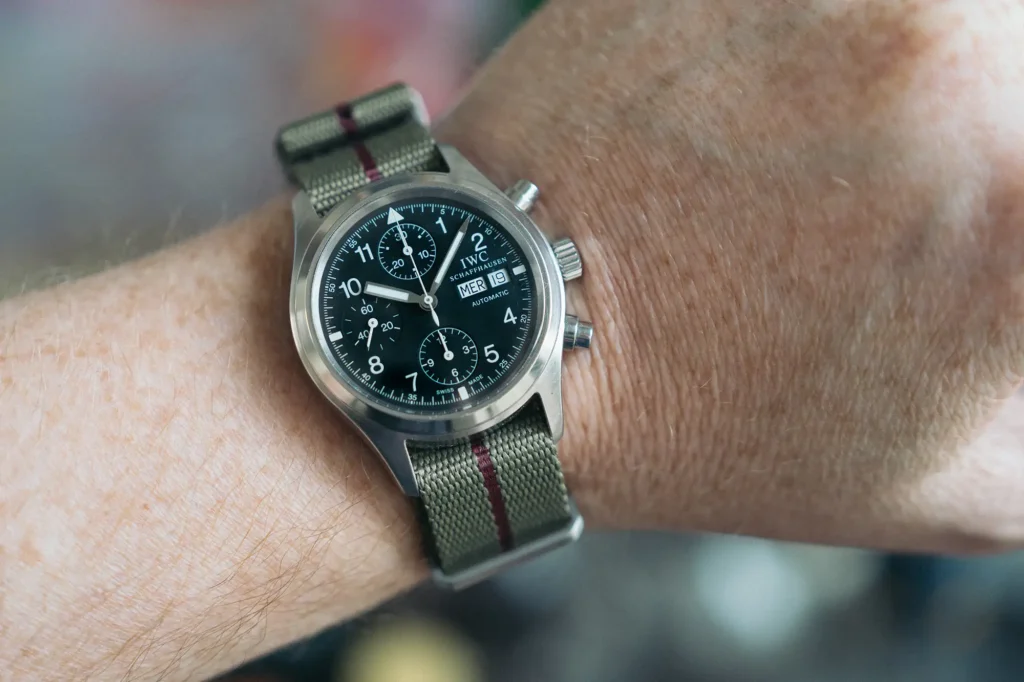
The use of this movement fits in with the MO of this watch, and it comes in an era when everything didn’t need to be in-house to be considered good (see more of my thoughts on that subject right here). What mattered was reliability and robust build quality, and the 7750 obviously has that in spades. This movement brings its famous tri-register layout to the dial, along with a day and date complication situated at 3 o’clock. Symmetry is found in the timing elements, with the totalizers at 12 and 6 o’clock (both of which are lightly outlined), and the running seconds hand placed at 9 o’clock (with no outline).
The manner in which these elements are treated makes the watch truly feel like an instrument made of a lab of some sort. It’s concise, focused, and effective. The proportions of the sub dials to the rest of the dial feels slightly jarring compared to many modern chronographs, but everything has its own space to breathe, catering to maximum legibility over big personality. That said, this watch does have a quaint personality to be enjoyed.
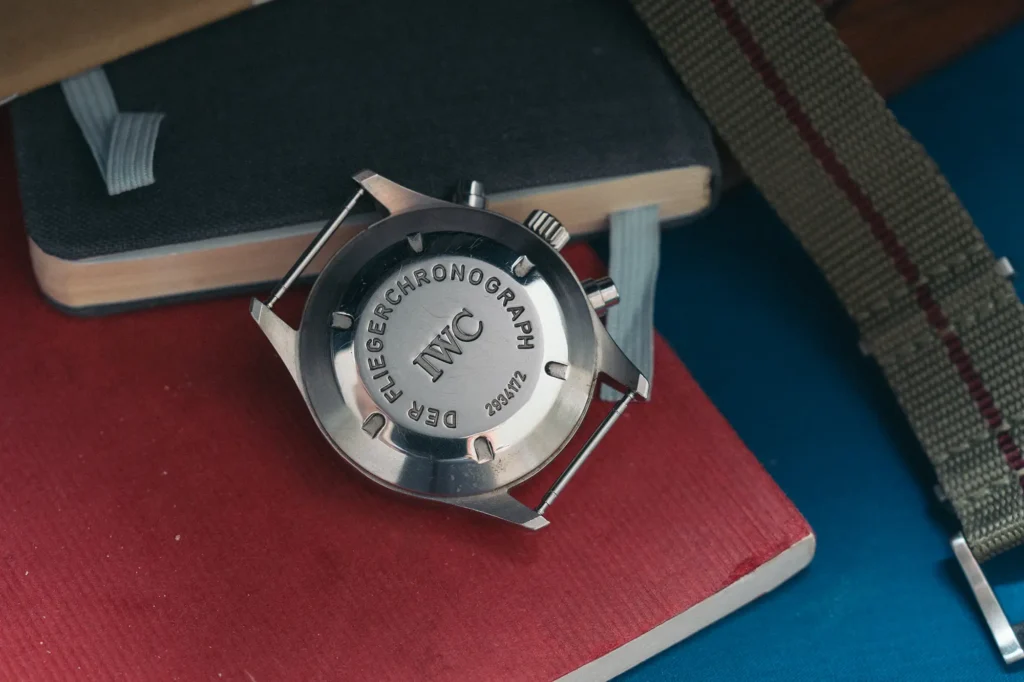
One remnant of this design that was left by the wayside is the design of the hand set. The block hour hand and pencil minute hand are a favorite detail with this watch, and they feel far more effective than the enormous sword hands at use today within the Pilot’s Chronograph collection. This is highly subjective, of course, but there’s something so unique about these hands that almost defines the generation above other brands which has been lost to the more commonly seen broadsword units. I’d dearly love to see IWC embrace this core part of their DNA in a more consistent fashion.
The biggest issue I’ve found with this reference is the slightly domed crystal, which catches every reflection possible within its viewing radius. The detail hinders legibility to a notable degree, and while it looks cool, it just doesn’t jive with the super focused design seen within the dial. I would welcome a modern modification that would fit a flat crystal to this watch, and others like it (looking at you, Sinn EZM1).
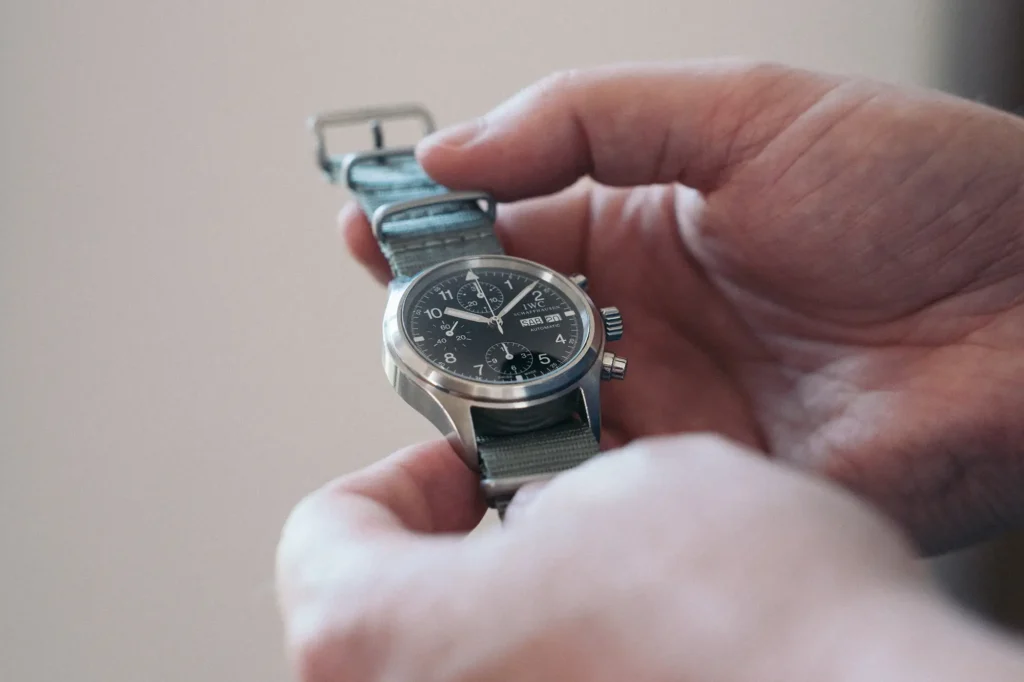
Overall, the 3706 is a window to another era, and it’s a refreshing reprieve from the more status driven, luxurious watches we see being produced today. Modern IWC watches are no doubt beautiful, but there’s something in this 3706 that’s been lost in translation. The same could be said for many of the legacy brands out there these days. Thankfully, there are still plenty of these out there to be found and enjoyed.
The 3706 is not a rare sight in the secondary market, and nice examples can be had for around $3,000. It was offered on an OEM rubber strap, many of which have not stood up so well to the test of time, but they were also offered on a brick road style bracelet, which still looks bang on trend today. The watch also looks quite sharp on all manner of fabric straps.
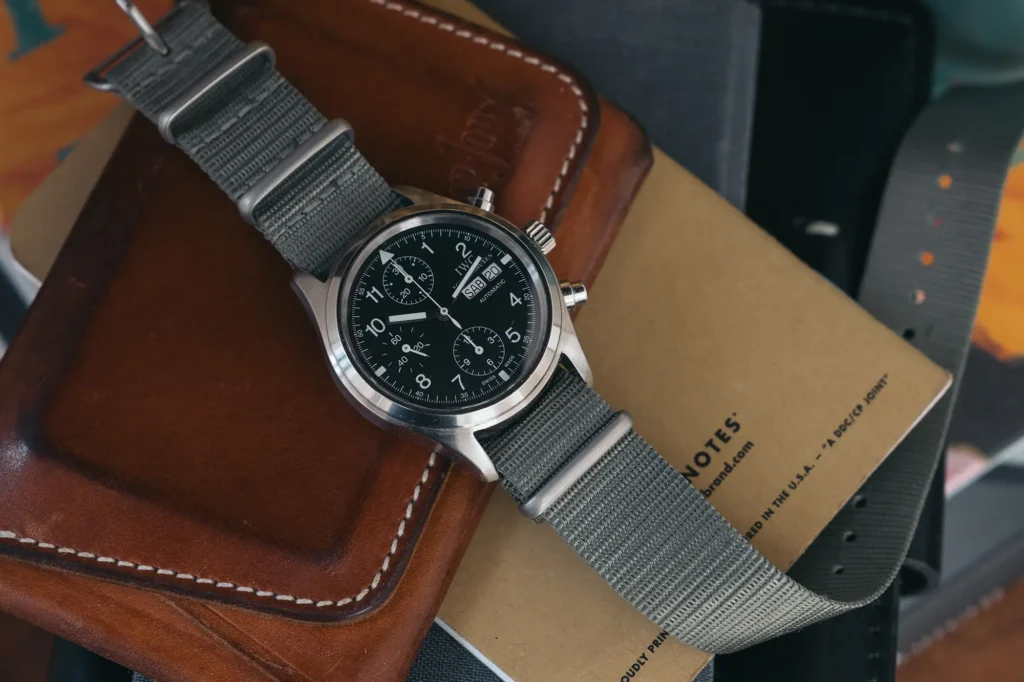
This Fliegerchronograph 3706 (and 3705) represent the best of an era from IWC, and their reputation hinges on their performance and utility, not who’s wrist they may have been spotted on, or what they achieved at the last auction. There are no plane engravings on the caseback or fancy ambassadors associated with this era of pilot watch, meaning these watches had less to hide behind if they weren’t received well. There’s an attitude about these watches that I’d love to see IWC embrace in their modern watches. Here’s hoping we see it sometime soon.

